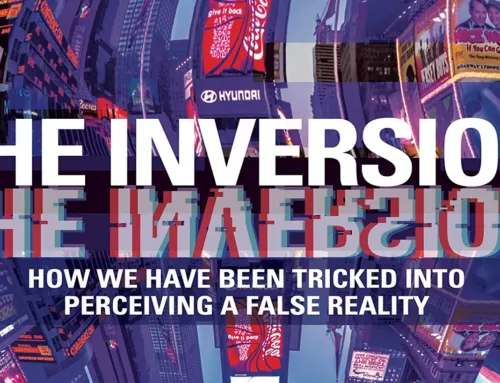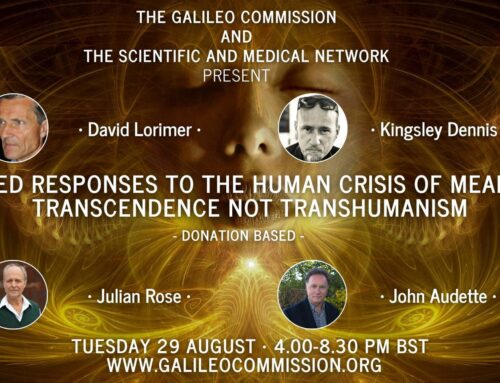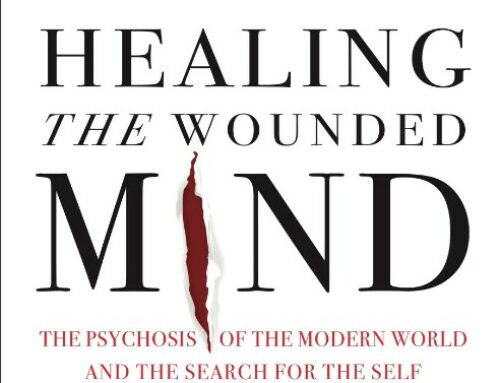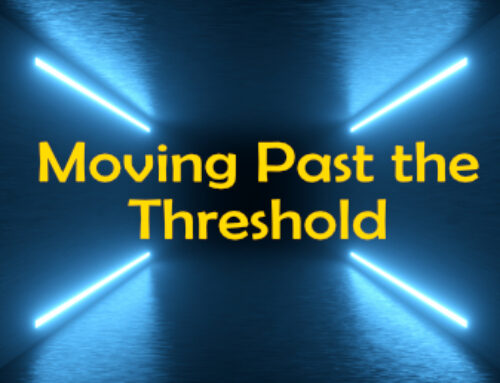The upcoming decades will more likely be based around potentials rather than linear trends, forecasts and certainties. One de-limiting aspect of our current situation is the lack of vocabulary we have to describe these ‘potentials’, since our human vocabulary is mostly geared towards describing what is, rather than that which can be beyond our current frames of reference. This illustrates one of the fundamental problems we now generally face: we lack the vocabulary and vision – irrespective of culture – to comprehend beyond our current models. What our current mindset often ends up doing is projecting, or rather extending, from present ‘knowns’, since we lack the tools to conceptualize the ‘unknowns’. Rather than taking either a ‘leap of faith’ (as it often has been termed), or lacking the vision of heightened perception, we are tempted to fall back onto familiar ground. The end result is a projection that is an expanded/extended version of current models rather than a new model. This tendency within many thought patterns has been responsible for some heinous decisions on such matters, for example, as global energy. By taking this extended-view model we can see how the energy industry tried to carry the production and distribution model for fossil fuels over to industrial bio-fuels (agro-fuels) and by doing so retaining much of the top-down infrastructure and control over supply and demand. The result has been the agro-fuel industry that has devastated incalculable areas of land, much of it that belonged to poorer communities in developing countries. This mindset is indicative to how human cultures have operated for millennia. At its heart lies a form of visionary idleness. And it operates like this:
if we adopt the methods or frameworks which have been developed by a set of people/institutions and/or cultural settings from before, then these idea-sets will eventually take over the current model and transform it as a reproduction of past ideas.
This has been seen throughout our cultural history; namely, that when an institution adopts the structures and procedures of a previous one, it will end up by resembling the previous one far more than itself. This is shown in our economic, cultural, social and political systems. If new developments and original ideas are to flourish then they need a completely new structure, methods, and procedures. Structures originally built for one kind of thinking will always produce the same ends, albeit in a different guise. This is part of the reason behind why we are coming up short in our human vision to perceive the future. This, I propose, is the weakest link in the chain of human vision. Buckminster Fuller summed this up neatly when he said: ‘You never change things by fighting the existing reality. To change something, build a new model that makes the existing model obsolete.’ Bucky knew very well that by fighting the existing system we are in fact validating the structures and processes that make up the very system we are opposing.
Let us be clear that ancient systems do not work in modern times if they have not been modified according to specific current factors. We often believe the old adage that ‘if it worked for us once, it will work again’. Yet these are primitive and superstitious beliefs; and beliefs are just that – they are neither fact nor necessarily true. When faced with a time or epoch that requires radical change we must begin to enter a period of mental pruning – a stage of ‘cutting back’ our outmoded belief-systems, ideas, priorities, and excesses: a pruning back of our delusions. If we don’t then we are, as the Chinese aphorism aptly described it, in danger of ending up exactly where we are heading.
Let us take another look at this situation by citing some future technological forecasts that were recently published in a New York Times article ‘Predicting the Future of Computing’. 2023 – Everyone Telecommutes: Networked collaboration obsoletes the notion of a 9-to-5 job, spurring a redistribution of the world’s population based on the ease of working selectively and remotely. 2143 – Post-Scarcity World: Abundance happens. Digital and physical sciences produce abundance so great that wealth becomes meaningless as a difference between people. 2306 – A.I. Government: For the first time, a municipality will be governed by an artificial intelligence. 2722 – Telepathic Society: Thought-based communication surpasses spoken and typed communication. These technologically driven speculations are linear extensions based upon present ‘knowns’ of computer trends. Like many futurist forecasts there are no systemic contexts or space for visionary potentials. And yet just how do such people think we will have achieved a ‘telepathic society’ by 2722? Since this is a technology-driven future forecast then I presume it will be by some form of wireless implanted nodes in our skulls. The question we must ask ourselves: just what would we do with a telepathic society based upon high technology potentials? For example, it has been extensively documented that various government and private projects have been working on the phenomenon of Remote Viewing (RV) since at least the early 1970s. Remote Viewing aims at developing the capacity to perceive events at a distance beyond the constraints of time and space. A huge leap forward for human evolution and civilization one might think – and yet what have been the major uses of this incredible capacity? Well, in the context of highly classified military projects people are trained to spy and to search for ‘enemy’ weapons and secret military installations. Also – wait for it – for browsing around the moon![2] Is this a foretaste of how our developing capacities will be put to use? The extended-view model is thus a continuation upon current models that are themselves based upon, or are appropriated forms of, more ancient patterns of thinking. Human perception has yet to be developed to a degree that it is able to consistently and naturally perceive patterns and potentials that lie beyond the future. Linear models do not and cannot operate beyond this boundary; this is part reason why our vocabulary is proving inadequate to even begin to conceptualize the potentials that exist within a clearly different model. In effect, there is a redundancy and incapacity currently inherent in our human language and modes of communication. We are living in a world where our preparations have become our objectives. This is no longer good enough.






